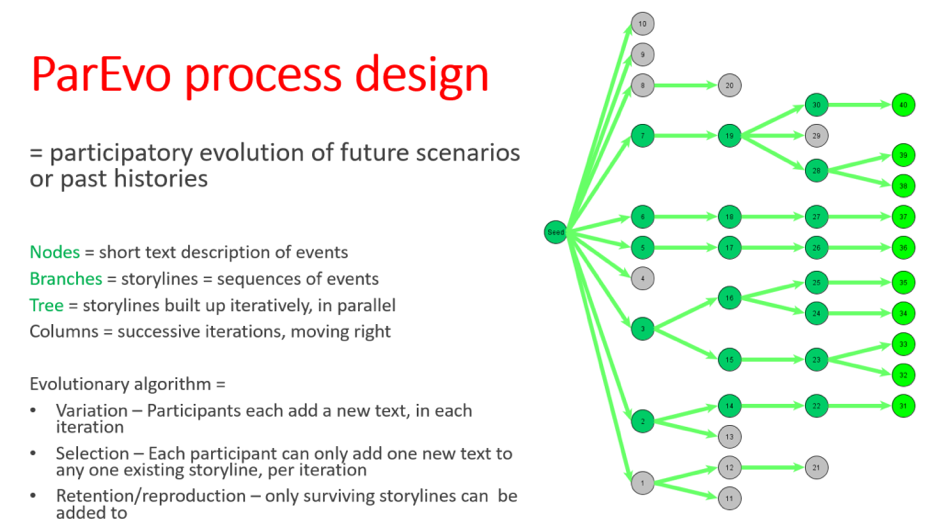Hi. My is Rick Davies, an evaluation consultant working mainly with international aid programs. I have an interest in methodology development and a long-standing interest in applications of evolutionary theory.
Most evaluators spend a good part of their time looking backwards, at what has happened and whether things have turned out as expected to. Or otherwise.
But in a world of rapid technological, political and climate change perhaps we should be spending more time looking forward at possible futures. There is now a wide range of methods of articulating ideas about possible futures, ranging from expert-based to participatory, from qualitative to quantitative, and from evidence-based to imagination based.
Earlier this year I developed a new web-based futures exploration tool called ParEvo, which is participative, qualitative and imagination based, but amenable to expert review and quantitative analysis. The design is based around the idea of the evolutionary algorithm, as shown below. It is now available for anyone to use free of charge, with or without my technical support.

While the focus of the app is the participative construction of multiple alternative storylines about what has happened or might happen, there is a significant evaluation component as well. After each iteration, participants review the alternative storylines and add a new contribution to one of those storylines that they would like to see developed further. At the end of a designated number of iterations all participants are asked to make a number of evaluative judgements about the storylines developed up to that point: which are the most and least probable, and which are the most and least desirable. At this point it is also to bring possible to bring in other stakeholders, such as subject experts, who could look at each of the storylines and identify, for example, the extent to which they are scientifically plausible. It is also possible to do a social network analysis of the patterns of contributions made by the participants, as shown in detail here.
Hot Tips:
- Use ParEvo to develop alternative storylines about what happens after a new program introduces a number of interventions into a community.
- Look back at a program that was established some years ago, constructing alternate storylines about how that program developed, by involving different stakeholders as participants in the ParEvo process
Rad Resources:
- David Bengston’s 2019 review of ‘Futures Research Methods and Applications in Natural Resources’.
- A full description of ParEvo: A web-assisted participatory scenario planning process
Do you have questions, concerns, kudos, or content to extend this aea365 contribution? Please add them in the comments section for this post on the aea365 webpage so that we may enrich our community of practice. Would you like to submit an aea365 Tip? Please send a note of interest to aea365@eval.org. aea365 is sponsored by the American Evaluation Association and provides a Tip-a-Day by and for evaluators.

ooohhh…
Thanks Rick
I love this….. looks like an exciting tool
now I am thinking on how to use it in practical way,…
Thanks
Dwiagus